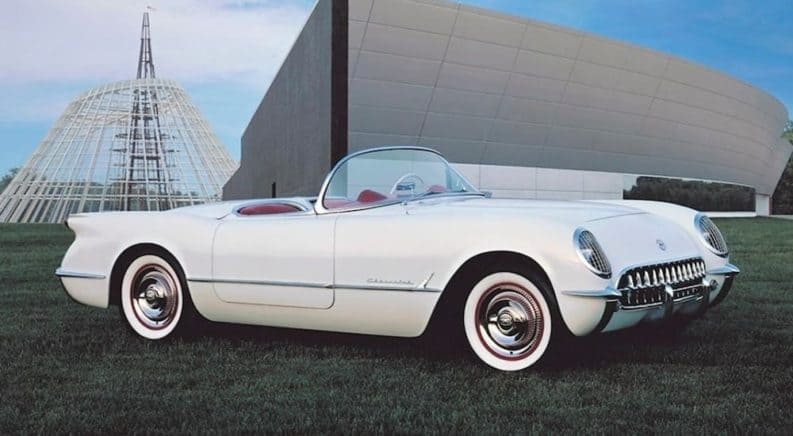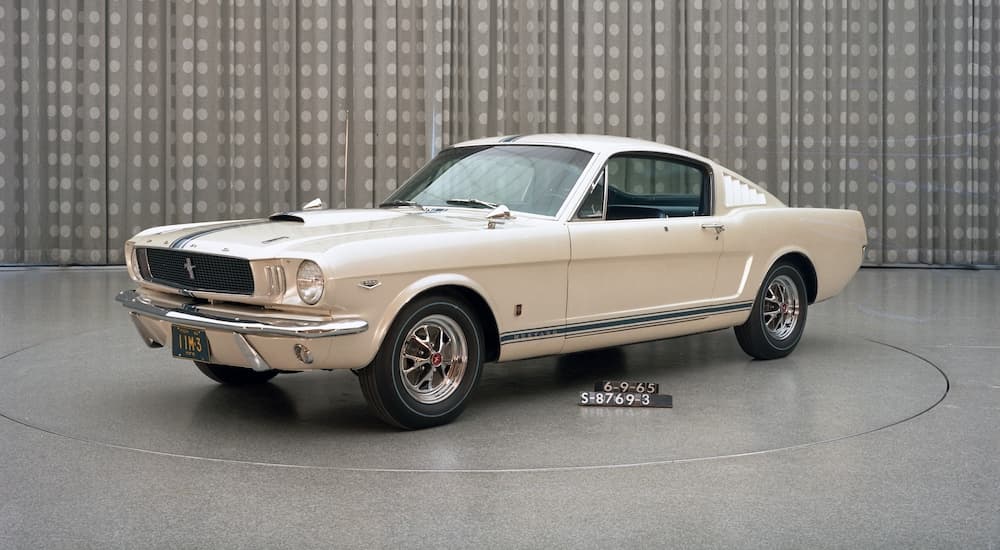Rivalries and competitions are one of the biggest entertainment and gossip creators in life. Great rivalries spur invention, art, sport, and life. In art, we had Michelangelo going head-to-head with Leonardo Da Vinci in Renaissance Florence, making great art and architecture that we still appreciate to this day. In science, Thomas Edison and his former employee Nikolai Tesla battled over direct current and alternating current, with Tesla’s AC winning the battle, but Edison’s General Electric ultimately winning the war by adopting Tesla’s scientific breakthroughs. You can see this even when you visit a Chevy dealer.
The history of the American car can really be summed up in one competition, Chevy vs. Ford. The two companies have been fighting it out on the streets of American for the last 100 years, improving automobile performance and safety as a result. Who is the winner? The customers of these great brands, since the rivalry has produced so many awesome cars.
An Inextricably Linked History
It started with two auto races and a deal that went south. A young inventor named Henry Ford designed a 26-horsepower racecar he called the Sweepstakes and defeated a 70-horsepower Bullet in the 10-lap race around the one-mile oval at the Detroit Driving Club back in 1901. Young Henry took the winnings and founded a company he named the Henry Ford Company, his second attempt at starting an automobile business. It was also his second failure. For Ford, the old adage “third time’s charm” would come into play when he started the Ford Motor Company in 1903. Utilizing his revolutionary concept of the integrated moving assembly line, Henry Ford turned his little startup into an economic powerhouse.
Around the same time, a man named William C. Durant started a business he called General Motors. It was a wild and wooly time for the automotive business as 270 different companies battled for position in the fledgling industry. As with most startup businesses, most of them would fail within only a few years of founding. But Billy Durant had a head for business and a passion for cars. He soon built GM into the industry leader it would remain to this day. Durant took an interest in Ford’s company, which was number three in American auto sales at the time. In 1909, he put together an offer to have GM buy Ford for $2 million and $4 million paid out over three years at 5 percent interest. GM’s Board of Directors approved the offer, and Ford accepted. Unfortunately for Durant, the economic climate changed in 1910 with a financial panic (what we would call a recession today), and GM was unable to find a bank to help them finance the deal.
As a result, Billy Durant was fired from the company he had founded.
Most folks who would have found themselves in Durant’s position would have given up. He had made good money as GM’s founder and CEO, so he could have retired and lived on his savings, but Billy Durant was not a quitter. He took his money and founded a new company. This is where the second race comes in. A popular racecar driver named Louis Chevrolet had been hired to race Buicks by Durant back when he was head of GM as a way of promoting the Buick brand of performance cars. Upon leaving GM, Durant contacted Chevrolet, and the two agreed to start a new company on November 3, 1911. Looking to leverage the fame of the great racer, Durant named his new company the Chevrolet Motor Company, and took aim at budget auto producer Ford Motor Company. What started as a merger turned into a rivalry that persists to this day.
Different Corporate Approaches
Durant’s Chevrolet Motor Company proved to be a smashing success. Louis Chevrolet loved the fast life of a racecar driver and was more than happy when Durant bought out his interest. Then Durant used the money he’d earned from Chevrolet to acquire the largest shareholder of General Motors. In 1916, he acquired control of GM, made himself chairman, and merged Chevy into GM as a subsidiary. General Motors would remain a public company acquiring other automotive companies or starting new ones, including Pontiac, Cadillac, and Oldsmobile.
Meanwhile, Henry Ford took a completely different approach. The idiosyncratic genius made Ford one of the biggest family businesses in the world. In 1919, he installed his only son Edsel as president of Ford Motor Company. Sadly, the visionary Edsel died young of stomach cancer in 1943, and Henry’s grandson Henry Ford II would become company president in 1945. Ford would remain a private company until the forward-thinking Henry Ford II took the company public in 1956, opening up financing opportunities that had been enjoyed by General Motors and its subsidiary Chevrolet since inception. In addition, while Chevy became a subsidiary, Ford became a conglomerate, acquiring Lincoln in 1922 and founding Mercury in 1938.
Fast Cars and Innovations
One thing both Chevy and Ford have excelled at is designing and manufacturing sporty cars that are affordable for most drivers. Ford got the affordable part down when he introduced the Model T in 1908.
However, this was a very basic car, and Henry Ford resisted efforts to update, upgrade or replace his beloved Model T. Sensing an opportunity, Chevy introduced the Classic Six as its first production car in 1912, offering a six-cylinder engine at a time when most cars like the Model T only ran on 4-cylinders.
In addition, Chevy offered the low-priced Royal Mail roadster and the higher-priced Baby Grand touring car to better capture the budget and luxury markets. This was followed in 1916 by the Chevrolet 490, a budget car that was a direct rival to Ford’s Model T. The 490 was a huge success, providing the funds Durant needed to buy General Motors.
Nevertheless, Henry resisted the advice of his son Edsel to innovate his car. By 1927, sales of Chevy cars exceeded those of Ford. With declining sales, Henry Ford finally listened to Edsel and premiered Ford’s first new car, the Model A. While a success among industry experts, sales were hurt by the 1929 Stock Market Crash and the ensuing Great Depression. Following the outbreak of World War II, the rivalry between Chevy and Ford shifted to producing the best weapons for the Allies.
The two companies helped pioneer many innovations, including corporate branding with Ford adopting its script logo in 1907 and Chevy creating its classic bowtie in 1913. Both companies were key in the creation of the modern pickup truck. Ford introduced its Model TT truck in 1917. Chevy followed suit in 1918 with its first pickup truck. In 1948, Ford began producing its highly successful F-series truck. That same year, Chevrolet started manufacturing Advance Design pickup trucks, offering many features that would evolve into today’s line of Silverado trucks.
The rival also led to some great innovations. Ford produced the Flathead V8 in 1932, the first commercially successful V8 offered on cars. Chevrolet took it to the next level with the small block V8 engine in 1955. This engine would help give wings to one of the greatest competitions between the two automakers, the classic American sport scar.
In 1953, Chevy would produce the Corvette. This was the first commercially available car with a fiberglass body. The Corvette took the Jet Age to the sportscar, with clean aerodynamic lines that could only be achieved using a composite material, and a powerful and efficient engine. Not wanting to be outdone, Ford debuted the Thunderbird one year later. These two cars would continue to do battle until 1997 when Ford discontinued production of its fabled sportscar. It was fun, fun, fun until Ford took the T-Bird away. The Thunderbird would make a brief reappearance in 2002 before its final swan song in 2005. Chevy clearly won this battle, and some designs like the 1963 Corvette Stingray coupe with the split rear-window are considered to be classics sought after by the most discerning automobile collectors. Today, the Chevy Corvette has entered a new generation with a mid-engine design to rival the Ferraris and Lamborghinis, but a price that makes it affordable for most drivers.
Ford would find better success with another. The Mustang was introduced for the 1965 model year. In this case, Chevy would be the one responding to the challenge, and the response was perfect with the popular Chevy Camaro, the definitive American muscle car. Both of these models are still being produced by their respective companies with all the latest innovations and engines that are powerful, efficient, and effective.
Rivalries Drive Safety
One of the best things to come out of the rivalry between the two automakers is safety innovation. Whenever an automaker comes out with a new safety feature that gets universally adapted, we all win. In 1954, Ford became the first automobile manufacturer to subject its models to crash tests. These seemingly destructive exercises go a long way to making sure that you and your loved ones will survive an auto accident, while also allowing the designers to reduce the risk of injuries. Ford followed this up in 1970 by becoming the first automaker to offer cars with three-point self-adjusting and retracting front outboard lap and shoulder belts.
Chevrolet also made a number of key safety innovations. In 1934, Chevy began offering a knee action independent front suspension on its Master Series cars. This improved the safety and handling of the car, particularly in rough driving conditions. Also, Chevy became the first manufacturer to offer automatic transmission on low-priced cars. An automatic transmission improves the engine’s performance while also reducing the distraction caused by operating a manual transmission. Chevy’s parent General Motors also created the first successful crash test dummies in 1972, which became an industry standard, and the first airbag in 1973, called the air cushion restraint system. Each of these Chevy and Ford safety innovations became standard throughout the industry, helping to save lives and reduce catastrophic injuries.
Some folks think that rivalry and competition are a bad thing, but this would be a grave misconception. Looking back over the last 100 years, it becomes crystal clear that the rivalry between Chevrolet and Ford benefited not only the companies, but also the drivers, passengers, and auto enthusiasts.






